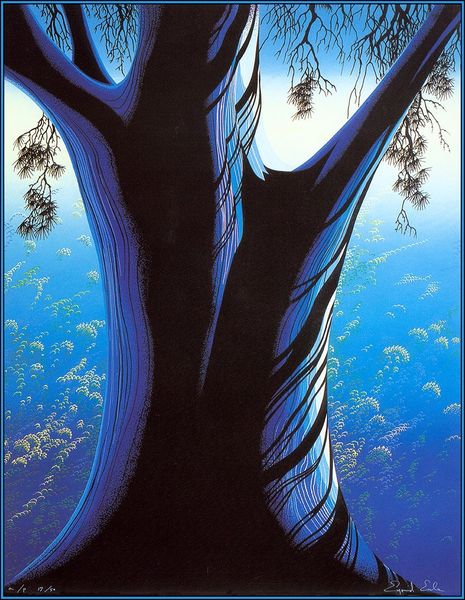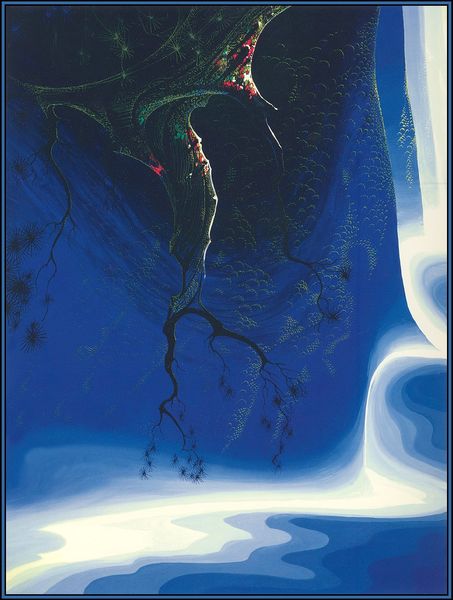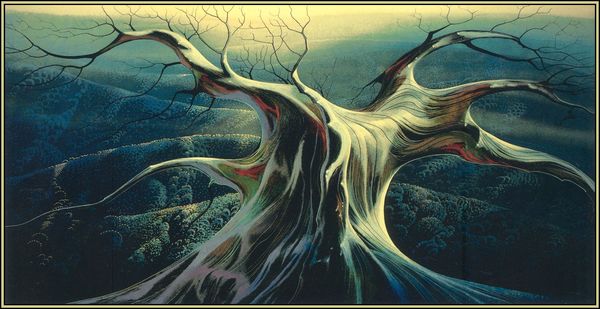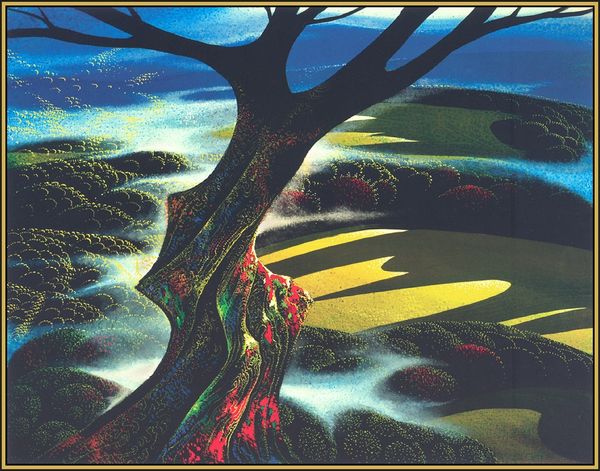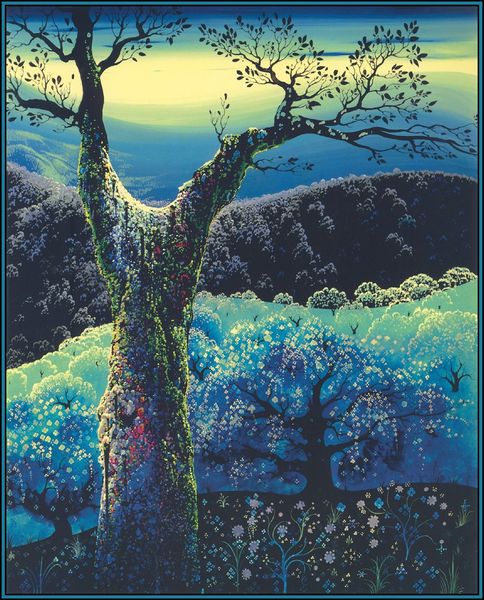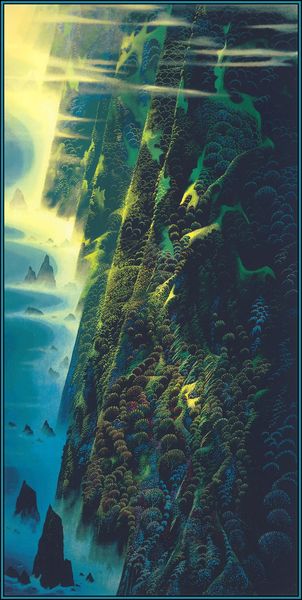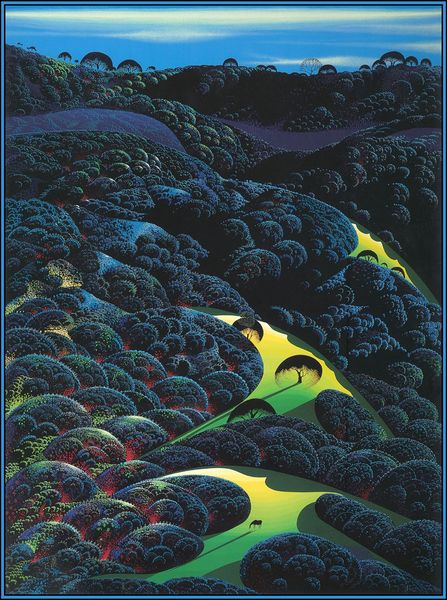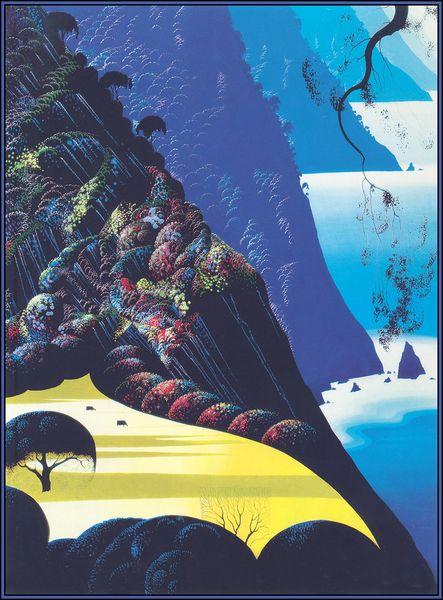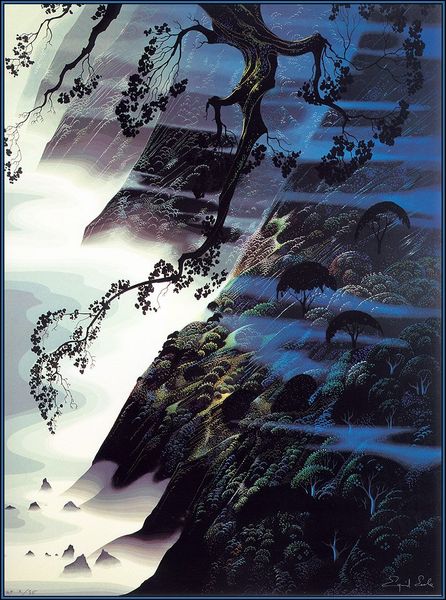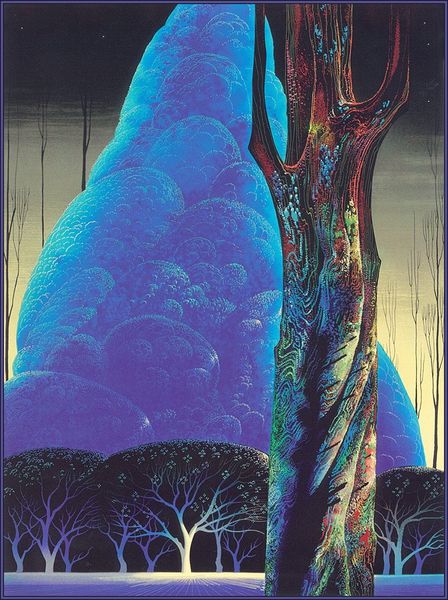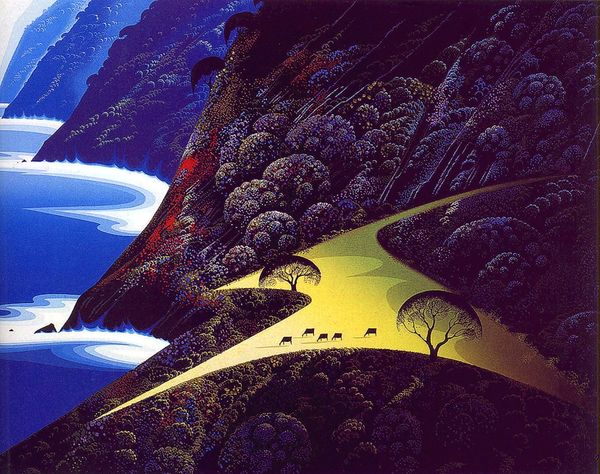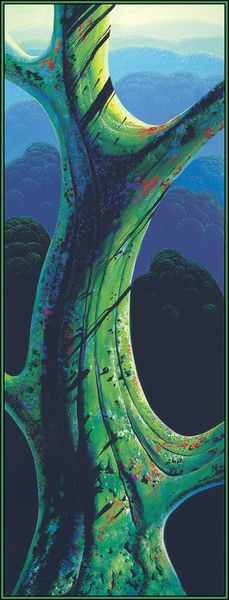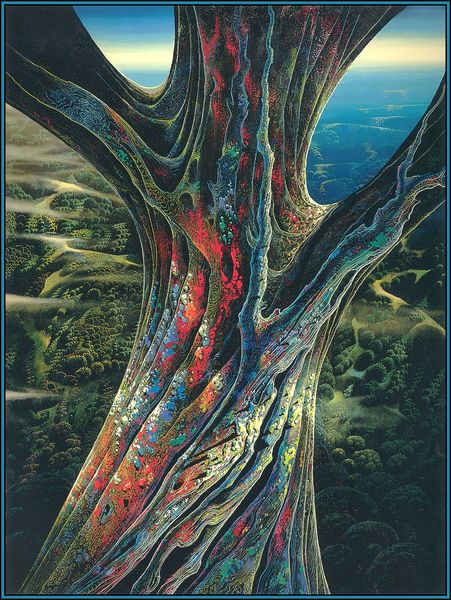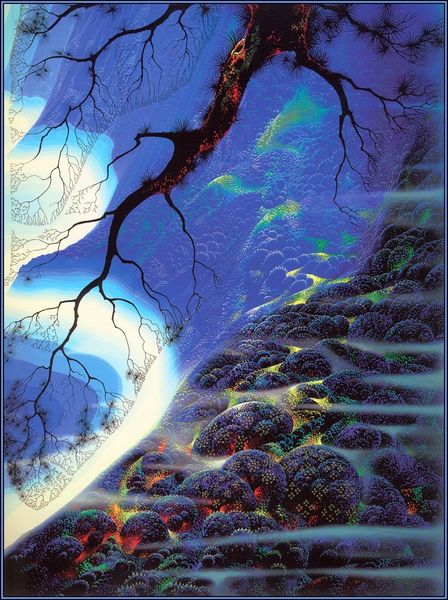
painting, acrylic-paint
#
painting
#
landscape
#
fantasy-art
#
acrylic-paint
#
geometric
#
naive art
#
surrealism
#
abstraction
#
line
#
cityscape
#
surrealism
#
modernism
Copyright: Eyvind Earle,Fair Use
Editor: Here we have what appears to be an acrylic painting, "Purple Tree and Mountains" by Eyvind Earle. It creates a very stylized and almost dreamlike landscape. What do you see in this piece? Curator: I see a landscape deeply rooted in utopian ideals, reflecting mid-century modernism's optimism. Look at the geometric shapes, the deliberate lines - it's an abstraction of nature. Consider, too, the social context: postwar America, a hunger for harmony, translated into art. Editor: Harmony? It feels a bit surreal, a little detached from reality. Curator: Precisely. Surrealism allowed artists to explore psychological landscapes during periods of social upheaval. Earle might be subtly commenting on environmental changes, filtering that anxiety through an idealized, perhaps even cautionary, vision. Editor: So, the fantasy aspect could be more than just aesthetic? Curator: Absolutely. Artists frequently employ fantasy as a lens to examine real-world issues. The use of purple, a color often associated with royalty and spirituality, might suggest a commentary on power structures or even a search for transcendence amidst a changing world. Who has access to nature, and how does that access shape their reality? What does that color palette evoke in you? Editor: I never thought about the social commentary hidden beneath such a peaceful exterior. It's like the painting is whispering a question about our relationship with nature and each other. Curator: Exactly! And that is how we bridge the artwork and contemporary conversation. By continually questioning what appears peaceful and utopian, we stay critically engaged with art.
Comments
No comments
Be the first to comment and join the conversation on the ultimate creative platform.
